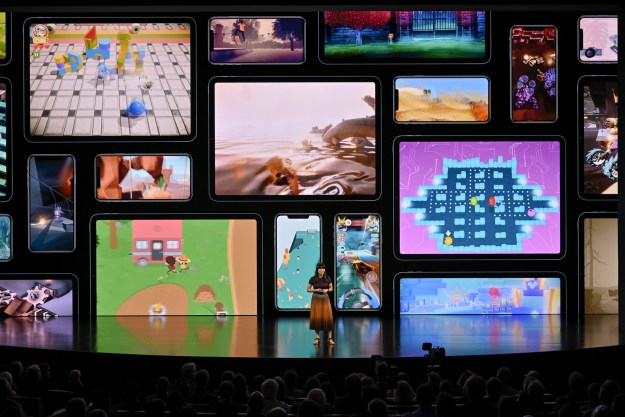“The K790a simply the best camera phone on the market, producing pictures that would challenge any entry-level digital camera.”
- World connectivity; 3.2 MP camera w/ Carl Zeiss optics and flash; MP3 player; stereo Bluetooth
- Candybar body style; no separate "end" or "send" keys; tiny web font; no exterior music control keys; no headphone jack
Summary
Sony has poured all of its multimedia know-how into the K790’s compact package, a template for other phone/camera/music player combinations. Most of all, this cell cam truly lives up to its Cyber-shot brand name. It produces the best pictures from a cell phone we’ve seen yet, with the best flash that we’ve seen in a cell cam and digital camera ergonomics that don’t interfere with other operations. It’s also packed with an excellent music player that has support for stereo Bluetooth. Best (and worst) of all, this is an unlocked phone, which means you can get the American (790a) or international (790i) version from Amazon or other non-carrier outlets. However, without a carrier subsidy, you’ll pay somewhere near the $499.99 retail price.
Features and Design
We admit to having a bit of prejudice against candy bar phones. Exposed to the elements, the two-inch, 240 x 320 pixel screen can be easily scratched; exposed to the contents of a bag or pocket, buttons will be pushed. Yes, you can lock the phone, but the two-key combo required for gaining access to the phone (“*” and then the soft "unlock" button) is the opposite of intuitive. And once you activate the auto lock feature (if you’re able to find it; it’s under “Security,” then “General” in the phone settings menu), the phone requires unlocking after a few minutes of non-use.
However, if you don’t consider constantly having to unlock your phone a bother, we’ll just move on as if nothing had happened.
Rather than the usual square LCD, the K790’s 1-1/4 x 1-5/8 inch screen is more radically oblong, handy for both viewing long menu lists and as a wider viewfinder for the digital camera. Thanks to Sony’s Scalable Vector Graphics software, both images and text are rendered smoother, crisper, cleaner, and more readable than we’ve seen on any screen, which is fortunate, because the phone’s web text is the smallest we’ve ever seen (even smaller then the text you squint to read in classified ads).
The screen length makes the 4.1-ounce K790 a bit longer (4.1 x 1.8 x 0.9 inches) and leaves little room for the cramped keypad and navigation array. One compromise for the lack of key real estate is the absence of dedicated "send" and "end" keys. When "dialing" a number (we really need to find a more precise euphemism for entering a phone number in this touch-tone age), the "send" command is a soft key; ditto for the "end" key when you’re in mid-call. While functional, this does take a bit of getting used to. There’s also no "home" key; holding the "back" key for a couple of seconds brings you back home. There is a dedicated "c" key, however, which seems to act only as a rarely-needed “delete” key.
There are two tiny direct function keys on either side of the navigation array: one for web access and a tiled page icon key that brings up tabbed function and application lists. A small recessed joystick makes menu navigation simple.
While cramped, each row of the K790’s alphanumeric keypad is angled oh-so-subtly, rather than flat, allowing more accurate number and letter punching.
Camera ergonomics are exemplary. Turn the cell horizontally, push down the lens cover on the back, and the camera is activated. There’s a self-portrait mirror and a Xenon flash around the Carl Zeiss lens. Both the standard soft keys become camera options, and two small keys on what is now the left of the screen, bracketing the earpiece, become two more soft keys. In shooting mode, for instance, the bottom key lets you toggle between shooting modes. The joystick lets you toggle between still and 15 fps video mode. On the top right, falling conveniently just below your index finger, is the shutter release. On the top left is a toggle that controls volume during voice calls and becomes the smooth variable 16x digital zoom for the camera function (both unique attributes in a cell cam). You also get a BestPic burst mode, a picture blogging mode, and PictBridge for direct-to-printer USB hard copies.
Our only complaint about the camera ergonomics is the lens protector. It can’t be locked in place, so it can accidentally slide up, activating the camera; this could result in a dead battery and lovely photos of your loose change.
The joystick and soft keys ably do the work of dedicated music transport controls found on other music phones. Surprisingly, there’s no standard headphone jack, and we’ve been unable to locate an accessory stereo headphone with the K790’s proprietary jack. This means you’ll have to buy a stereo Bluetooth headset for personal music listing.
Sony has included a raft of phone, multimedia, and internet features in the K790, including 900/1800/1900 EDGE/GPRS worldwide GSM connectivity, a Memory Stick Micro card slot (which some may consider a drawback, since these cards are not as ubiquitous or inexpensive as micro or miniSD cards), an FM radio, a Java for game play, stereo Bluetooth for music listening, its MusicDJ and VideoDJ sampling software, push POP3/IMAP4/SMTP e-mail, and the standard text messaging. There’s also the usual cell phone app suspects: alarm clock, calculator, calendar, and timer. Inside is 64 MB of memory, in case you don’t pick up a Micro Memory Stick.
Image Courtesy of Sony Ericsson
Performance
Every aspect of the K790 is near top-notch. On Cingular’s network in Manhattan, voice quality is a bit thick, but loud, clear, and consistent. Ringtones were also loud enough to be heard from a pocket or nearby bag, and the simultaneous vibrate is appropriately violent. The voice toggle also conveniently lowers the ringtone volume.
WAP web access is quick, as is usual on EDGE networks. Without having to deal with HTML graphics, pages filled almost instantaneously once they began to draw. But, as noted, text is painfully small, the smallest we’ve ever seen on a phone.
You’re not choosing the K790 for its phone capabilities or its web access, though, regardless of their quality. You’re coming for the 3.2 megapixel camera, which (at this point in time) is the absolute best we’ve seen in a cell phone. A relatively quick shutter release freezes scenes right when you want them captured, not blurry seconds later; the Carl Zeiss optics and an image stabilizer produce crisp and clean images, deep contrasts, a sharp focus, and true colors that lean a bit more toward the blue and yellow — especially in flesh tones — than we’d like. Best of all is the powerful Xenon flash, which clearly illuminates an entire scene six feet away and more, indoors or out, although it may overwhelm something or someone closer. No flash on any other cell cam even comes close to the brightening ability of the K790 flash.
The K790 is also appointed like a standalone digital camera, with a three-segment panorama mode, seven scene modes (including snow/beach, document, twilight, landscape, and portrait), both macro and infinite focus modes, red-eye flash mode, four effects modes (black and white, negative, sepia, and solarized), and even spot metering. Also, images are auto saved without pressing any additional buttons.
Image Courtesy of Sony Ericsson
Even considering all this, we don’t recommend leaving your standalone digital camera at home when going on vacation, but you needn’t panic if you left it behind accidentally.
Sony Ericsson claims 7 hours of talk time and up to 350 minutes standby. Our tester was a pre-production model, so we cannot confirm this. However, camera and Bluetooth use could easily sap its battery in a day, so we wouldn’t venture far without a charger.
Conclusion
The K790a simply the best camera phone on the market, producing pictures that would challenge any entry-level standalone digital camera. But because it’s unlocked, you’ll pay four times as much as you would for that cheap digital camera.
Pros:
• Exemplary 3.2 MP digital camera
• Tri-band world GSM connectivity
• Speedy EDGE web access
• Music player with stereo Bluetooth
• Music ring tones
Cons:
• Unlocked and expensive
• Annoying auto key lock
• Tiny web font
• No external music control keys
Editors' Recommendations
- YouTuber MKBHD says this new gadget is the worst he’s ever reviewed
- Best true wireless earbuds deals: AirPods, Beats, Bose, Sony
- Apple Watch Ultra review roundup: a truly curious beast
- Sony’s huge 1-inch phone camera sensor is coming, ready to take on Samsung
- Apple hikes Apple Music price for students in U.S., Canada, and U.K.





